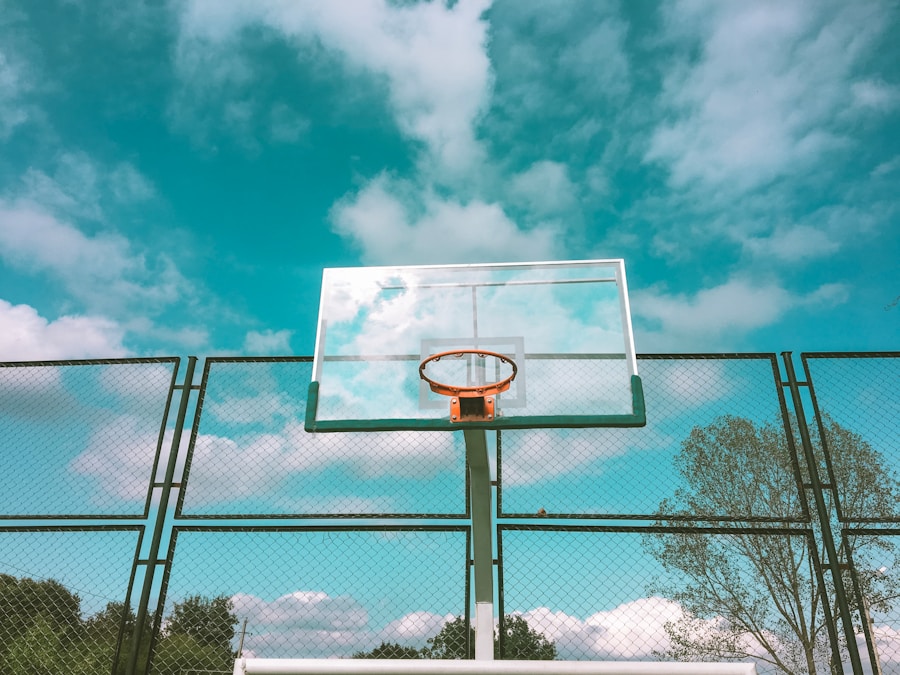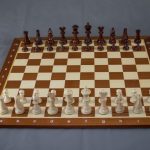Download links
How to install Mastering the Art of Basketball: Key Tips for Success APK?
1. Tap the downloaded Mastering the Art of Basketball: Key Tips for Success APK file.
2. Touch install.
3. Follow the steps on the screen.
Description
At the core of any sport lies a set of fundamental principles that govern how the game is played. Understanding these fundamentals is crucial for both new and experienced players alike. In team sports, for instance, the basic rules dictate how the game is initiated, how points are scored, and what constitutes a foul or violation.
Familiarity with these rules not only enhances a player’s ability to perform but also fosters a deeper appreciation for the sport itself. For example, in basketball, knowing the dimensions of the court, the significance of the three-point line, and the rules surrounding fouls can dramatically influence a player’s strategy and decision-making during a game. Moreover, the fundamentals extend beyond mere rules; they encompass the essential skills required to execute plays effectively.
This includes understanding positioning, timing, and spatial awareness. In soccer, for instance, players must grasp the importance of maintaining formation while also being aware of their teammates’ movements. This awareness allows for better passing and positioning, which can lead to scoring opportunities.
Similarly, in football, understanding the roles of each position on the field is vital for executing plays successfully. A quarterback must know when to pass, when to run, and how to read the defense, while receivers must understand their routes and timing to ensure successful completions.
Key Takeaways
- Understanding the fundamentals of the game is crucial for any player’s success, including knowledge of rules, positions, and basic tactics.
- Developing essential skills and techniques such as passing, shooting, and dribbling is essential for becoming a proficient player.
- Enhancing physical conditioning and endurance through regular training and fitness routines is key to performing at a high level during games.
- Mastering offensive and defensive strategies involves understanding the team’s game plan, as well as individual and team tactics for both attacking and defending.
- Mental preparation and focus are vital for maintaining composure and making quick decisions under pressure during games.
- Utilizing effective teamwork and communication is essential for success on the field, including understanding each other’s strengths and weaknesses and communicating effectively during games.
Developing Essential Skills and Techniques
Once players have a firm grasp of the fundamentals, the next step is to hone their skills and techniques. This process often involves repetitive practice and a focus on specific areas of improvement. For instance, in tennis, mastering the serve is crucial; it sets the tone for each point and can provide a significant advantage over an opponent.
Players often spend hours practicing their serves to develop consistency and power. Similarly, in baseball, hitting techniques are refined through drills that emphasize stance, grip, and swing mechanics. The goal is to create muscle memory that allows players to perform these actions instinctively during games.
In addition to sport-specific skills, players must also develop general athletic abilities such as agility, coordination, and balance.
For example, a basketball player with excellent agility can navigate through defenders more effectively, while a gymnast relies heavily on balance to execute complex routines.
Training regimens often incorporate exercises that enhance these skills, such as plyometrics for explosive power or agility drills that improve footwork. By focusing on both specific techniques and general athleticism, players can elevate their overall performance on the field or court.
Enhancing Physical Conditioning and Endurance

Physical conditioning is a critical component of athletic performance that cannot be overlooked. Regardless of the sport, players must maintain a high level of fitness to compete effectively. This involves not only strength training but also cardiovascular conditioning and flexibility exercises.
For instance, long-distance runners engage in endurance training to build stamina for prolonged exertion, while sprinters focus on explosive strength and speed. In team sports like soccer or basketball, players require a combination of both endurance and strength to sustain their performance throughout the game. Nutrition also plays a pivotal role in physical conditioning.
Athletes must fuel their bodies with the right nutrients to optimize performance and recovery. A well-balanced diet rich in carbohydrates, proteins, and healthy fats can enhance energy levels and promote muscle repair after intense training sessions or competitions. Hydration is equally important; even mild dehydration can impair performance and increase the risk of injury. Many athletes work with nutritionists to develop personalized meal plans that align with their training regimens and competition schedules.
Mastering Offensive and Defensive Strategies
| Metrics | Offensive Strategies | Defensive Strategies |
|---|---|---|
| Points Scored | 25 | 15 |
| Shots on Goal | 10 | 5 |
| Possession Time | 60% | 40% |
| Tackles | 20 | 25 |
Understanding offensive and defensive strategies is essential for any athlete looking to excel in their sport. Offensive strategies involve planning how to score points or goals while minimizing turnovers or mistakes. In basketball, for example, teams may employ various offensive sets such as pick-and-rolls or isolation plays to create scoring opportunities.
Players must be adept at reading defenses and adjusting their strategies accordingly. This adaptability is crucial; what works against one opponent may not be effective against another. On the defensive side, strategies focus on preventing the opposing team from scoring.
This can involve man-to-man coverage or zone defenses in sports like football or basketball. Each approach has its strengths and weaknesses; for instance, man-to-man defense allows for tighter coverage but can lead to mismatches if players are not evenly matched in skill or size. Conversely, zone defense can provide better overall coverage but may leave gaps that skilled offensive players can exploit.
Understanding these dynamics allows teams to develop comprehensive game plans tailored to their opponents’ strengths and weaknesses.
Mental Preparation and Focus
Mental preparation is often an overlooked aspect of athletic performance but is equally as important as physical training. Athletes must cultivate mental resilience to handle the pressures of competition effectively. This involves developing focus and concentration skills that allow them to remain present during high-stakes moments in games.
This mental rehearsal can enhance confidence and reduce anxiety. Additionally, managing stress and maintaining composure during competition are vital components of mental preparation.
Many athletes practice mindfulness techniques or engage in breathing exercises to help calm their nerves before games. The ability to stay focused amidst distractions—whether from fans, opponents, or personal expectations—can significantly impact performance outcomes. Coaches often emphasize the importance of mental toughness, encouraging athletes to push through adversity and maintain a positive mindset even when faced with challenges.
Utilizing Effective Teamwork and Communication

Developing Synergy through Practice
In team sports, effective teamwork and communication are paramount for success. Players must work cohesively towards a common goal, which requires understanding each other’s strengths and weaknesses. This synergy is often developed through practice sessions where players learn to anticipate each other’s movements and decisions on the field or court.
Verbal and Non-Verbal Communication in Action
For example, in soccer, forwards must communicate with midfielders about positioning and passing options to create scoring opportunities effectively. Communication extends beyond verbal exchanges; non-verbal cues also play a significant role in teamwork. Players often develop signals or gestures that convey information quickly during games without alerting opponents. This can be particularly useful in fast-paced sports where split-second decisions are crucial.
The Multifaceted Approach to Mastering a Sport
In conclusion, mastering a sport requires a multifaceted approach that encompasses understanding fundamentals, developing skills, enhancing physical conditioning, strategizing effectively, preparing mentally, and fostering teamwork. Each element contributes to an athlete’s overall performance and success in competition. By focusing on these areas diligently, athletes can elevate their game and achieve their goals in their respective sports.
FAQs
What is basketball?
Basketball is a team sport in which two teams, typically consisting of five players each, compete to score points by shooting a ball through the opposing team’s hoop.
What are the basic rules of basketball?
The basic rules of basketball include dribbling the ball while moving, shooting the ball into the opposing team’s hoop, and playing defense to prevent the opposing team from scoring.
What equipment is needed to play basketball?
The main equipment needed to play basketball includes a basketball, a hoop, and a court with marked boundaries. Players also wear basketball shoes and may use other protective gear such as knee pads.
What are the positions in basketball?
The typical positions in basketball are point guard, shooting guard, small forward, power forward, and center. Each position has specific roles and responsibilities on the court.
What are the most common fouls in basketball?
Common fouls in basketball include personal fouls (illegal physical contact), technical fouls (unsportsmanlike conduct), and flagrant fouls (excessive or unnecessary contact).
How is scoring done in basketball?
Scoring in basketball is achieved by shooting the ball through the opposing team’s hoop. Different types of shots, such as layups, dunks, and three-pointers, result in different point values.
What are some famous basketball leagues and tournaments?
Some famous basketball leagues and tournaments include the National Basketball Association (NBA) in the United States, the EuroLeague in Europe, and the FIBA Basketball World Cup.
What are some famous basketball players?
Some famous basketball players include Michael Jordan, LeBron James, Kobe Bryant, Shaquille O’Neal, and Magic Johnson. These players have achieved great success and recognition in the sport.





